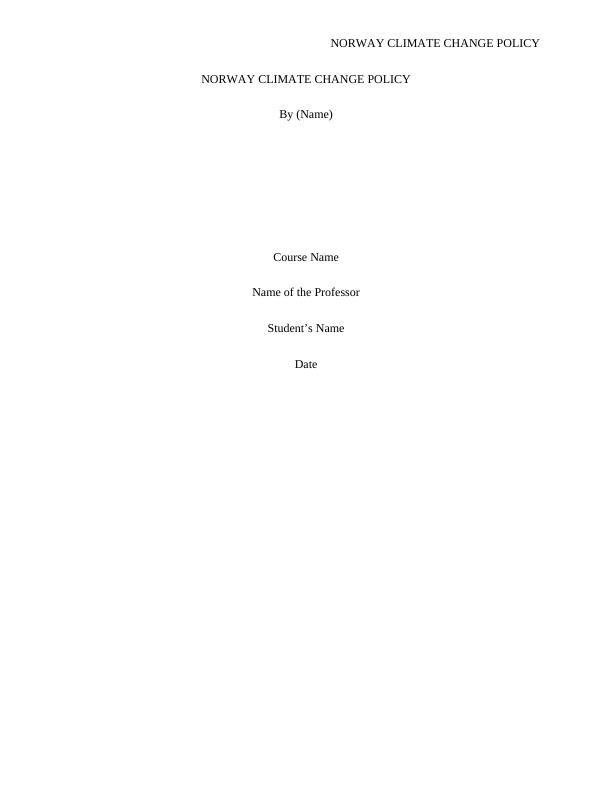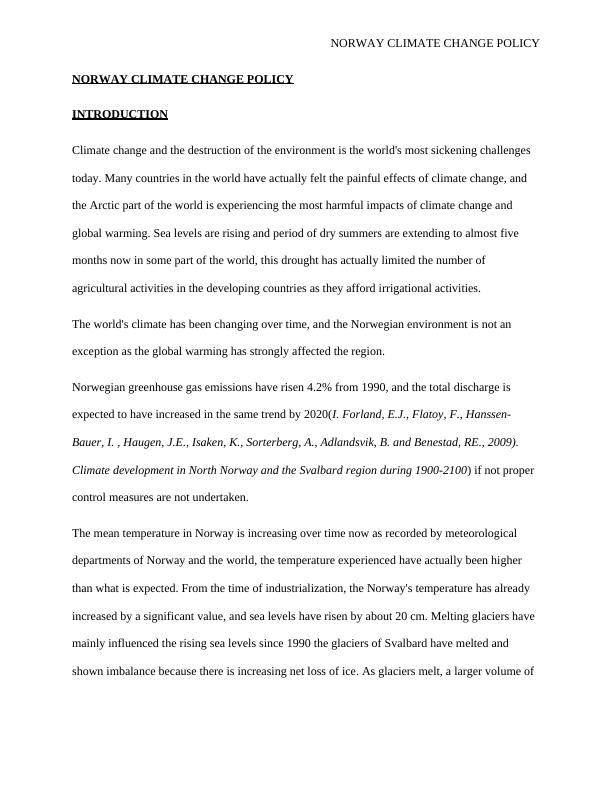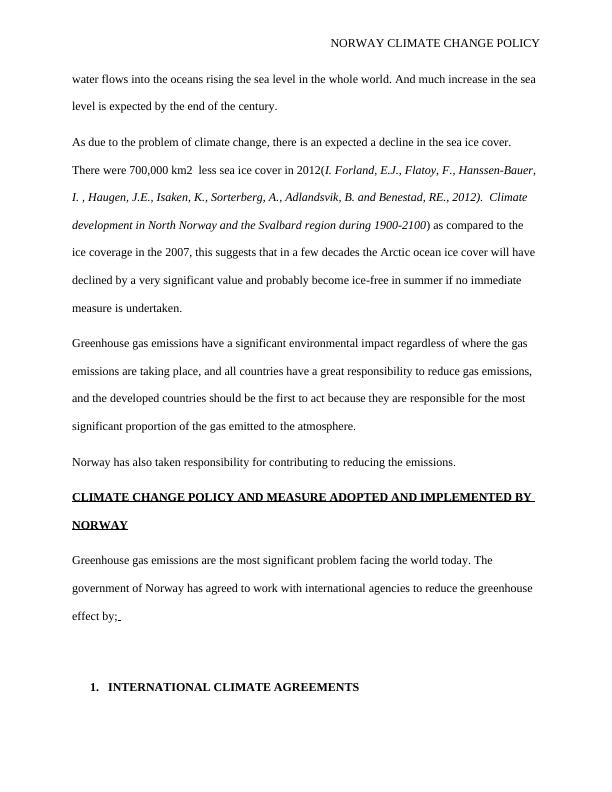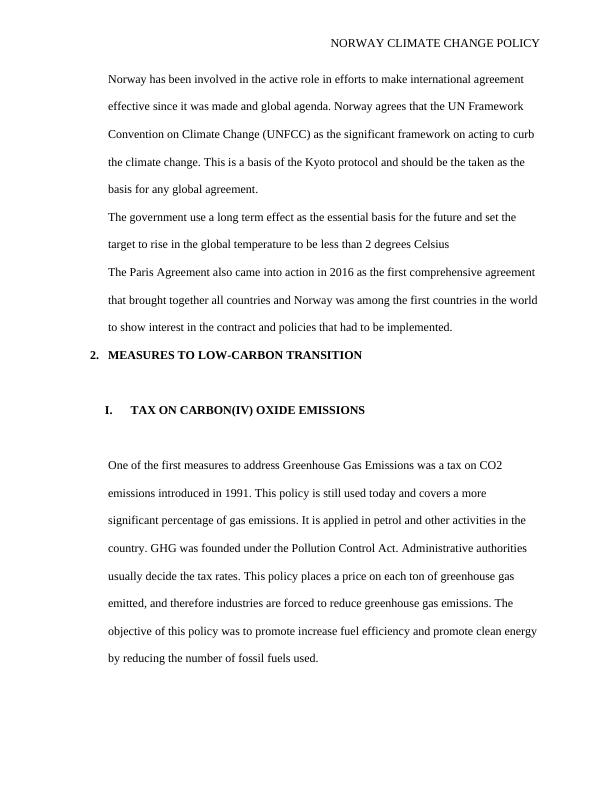Norway Climate Change Policy
Critically assess the current status of climate change policy and practice in Norway, evaluating current mitigation and adaptation policy and practice and providing an explanation for the current status based on evidence from desk-based research.
18 Pages3957 Words360 Views
Added on 2023-04-25
About This Document
This article discusses Norway's climate change policy and measures adopted to reduce greenhouse gas emissions. It covers topics such as tax on carbon emissions, electrification of ferries and passenger ships, emission-free land transport system, use of biogas, and more. The article also highlights Norway's cooperation with international agencies and the EU to fight against climate change and global warming.
Norway Climate Change Policy
Critically assess the current status of climate change policy and practice in Norway, evaluating current mitigation and adaptation policy and practice and providing an explanation for the current status based on evidence from desk-based research.
Added on 2023-04-25
ShareRelated Documents
End of preview
Want to access all the pages? Upload your documents or become a member.
Climate Change: Result of Human Activities?
|5
|2022
|88
Climate change and its impact in Australia
|14
|2630
|401
Responses to Rising Sea Levels (Doc)
|5
|820
|39
ALTERNATE ENERGY SUBSIDIZATION Assignment
|6
|1169
|17
Climate Change | Environmental Problem, Policy And Current Issue
|5
|1110
|13
Research Workbook on Climate Change
|8
|1959
|270




